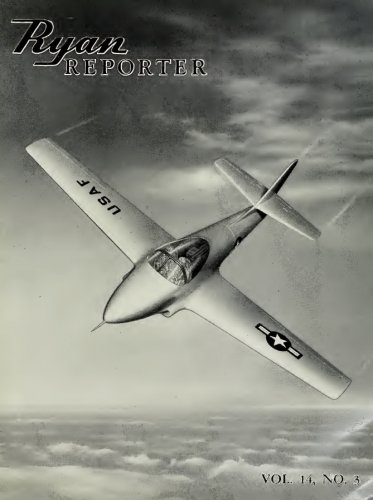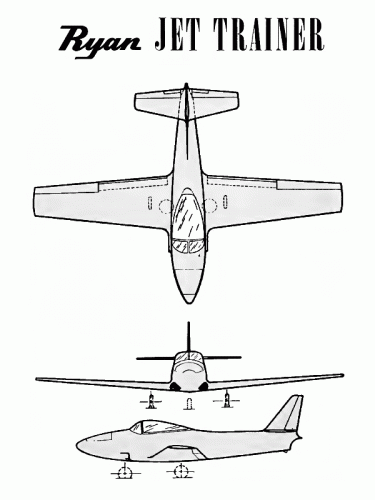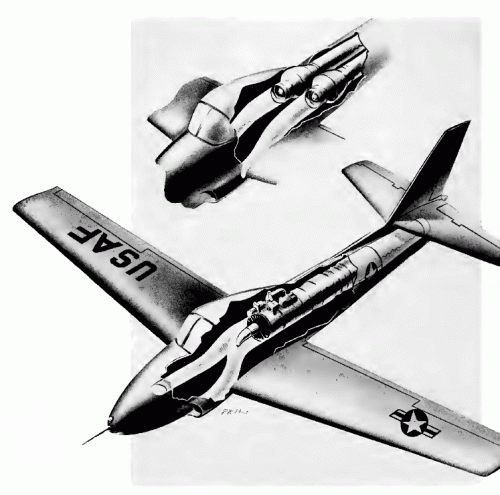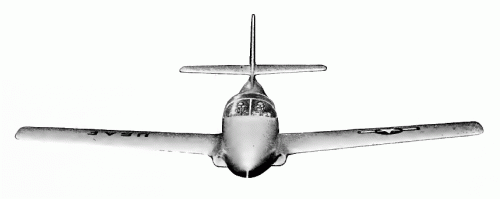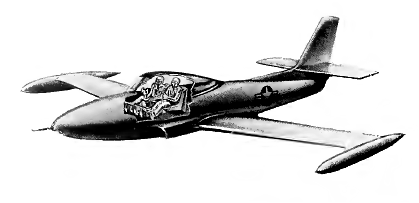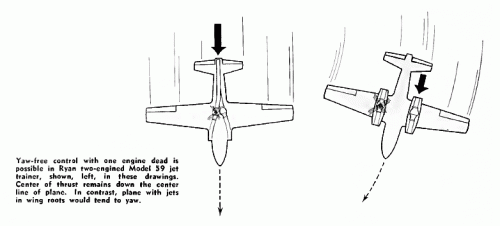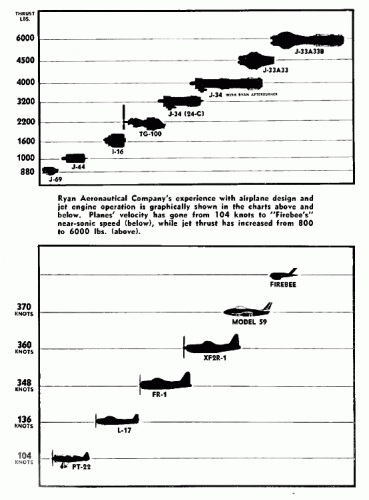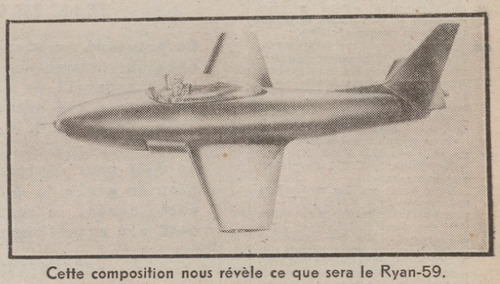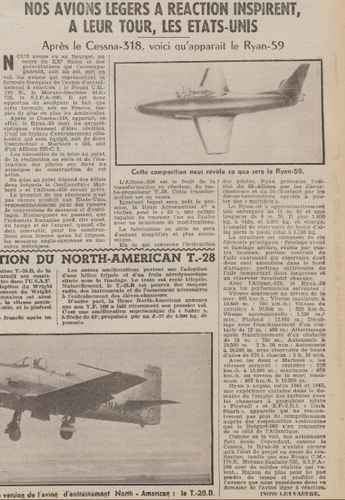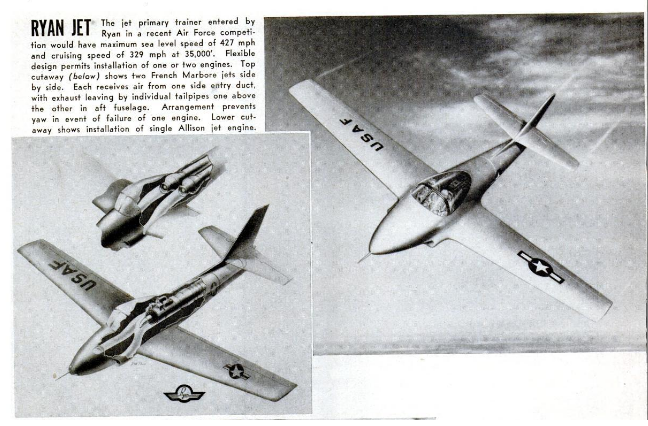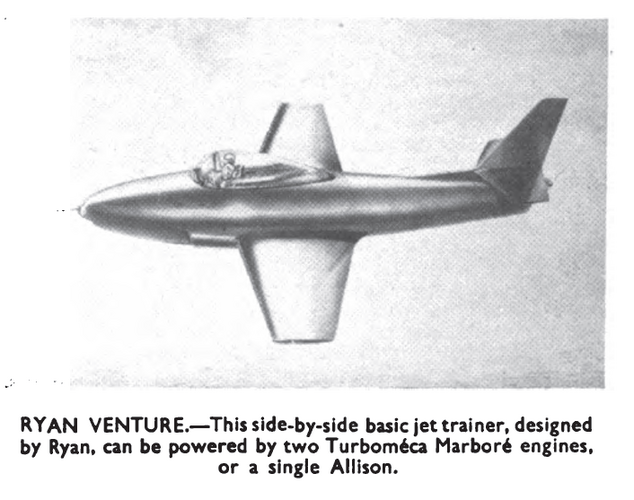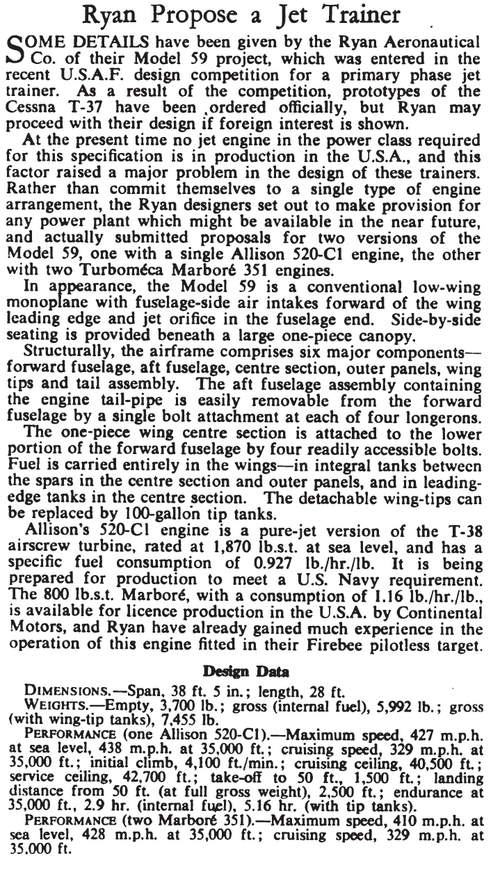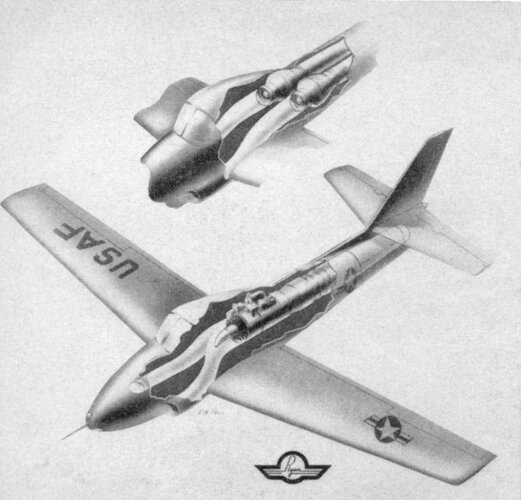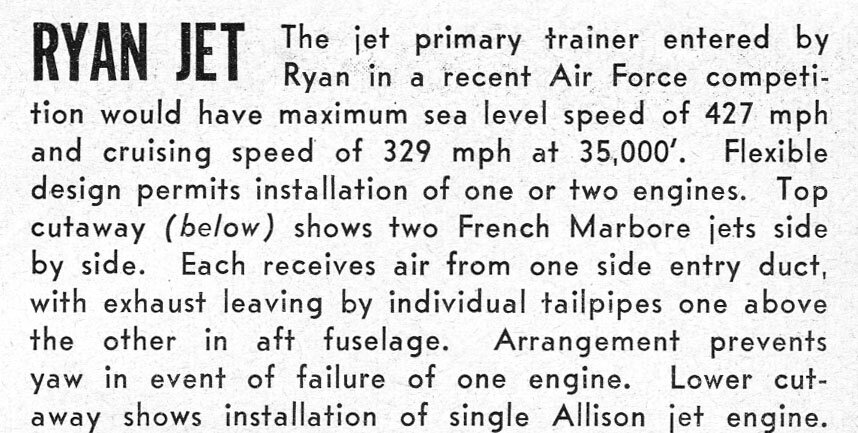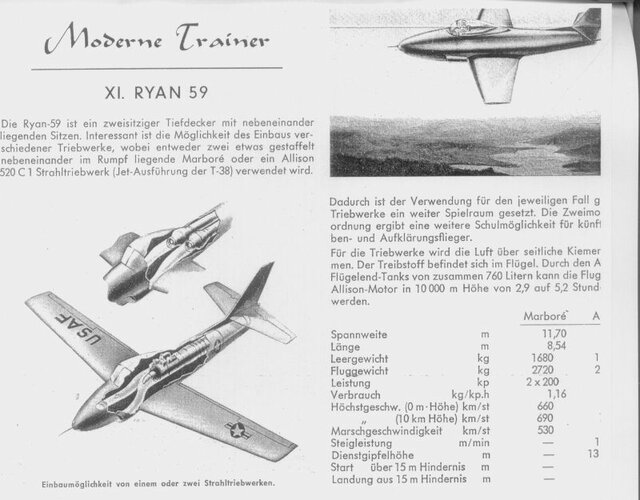- Joined
- 25 June 2009
- Messages
- 14,754
- Reaction score
- 6,155
The Ryan Primary Phase Trainer offers the military services an unusual opportunity, while the jet engine availability picture is still obscure, to conduct a test program in a single airframe with both the Allison engine and the dual Marbore installation, as well as with any other power plants which can be provided.
This overcomes the objection which has been raised to a foreign engine which must be Americanized and to a two-engine configuration; yet if the two Marbores should prove more adaptable than a single engine they can readily be used. The Ryan design avoids the danger of "putting all the eggs in one basket," and permits finalizing on the power plant after complete testing of all available engines.
FLEXIBILITY of design that permits interchange of power plants and versatility of function is the prime characteristic of Ryan Aeronautical Company's Model 59 Primary Phase Jet Trainer whose unusual features have attracted widespread interest.
Entered in a recent design competition conducted by the Air Force, the lowwing Model 59 monoplane possesses fundamental engineering concepts that have presented intriguing possibilities.
The major problem in the primary jet trainer field today is the uncertain power plant situation. No jet engine in the required power class has gone into quantity production ; considerable testing and tooling lies ahead.
Faced with this reality, Ryan engineers wisely decided against committing themselves to a design for their jet trainer built around a single, specific power plant. Such a "frozen" design, they realized, would necessitate major changes to accommodate any other engine which might become more acceptable in the constantly changing jet engine picture.
Without committing the Air Force or other user to any particular engine Ryan engineers designed a jet trainer than can not only be built around any power plant that may be available in the near future, but can accommodate any engine of this power class that might be developed in the still more distant future.
Further, there is enough space in the fuselage of the Ryan trainer not only for a single engine, but enough volume has been provided for the installation of dual engines.
For design purposes two versions were submitted, one with a single Allison 520-Cl jet engine; the other with two French Marbore 351 jets.
The Model 59 with Allison engine, probably the highest performance design submitted in the Air Force competition, would have a maximum speed at sea level of 370 knots (427 mph), maximum speed at 35,000 feet of 379 knots (438 mph), and a cruising speed of 286 knots (329 mph) at 35,000 feet.
Initial rate of climb would be 4100 feet per minute. Its cruising ceiling would be 40,500 feet, service ceiling 42,700 feet. Takeoff distance over a 50-foot obstacle would be 1500 feet with flaps down, and landing distance over a 50-foot obstacle would be 2500 feet at full gross weight.
With the two Marbore engines, the Model 59 would have a cruising speed of 286 knots (329 mph) at 35,000 feet, and maximum speeds of 356 knots (410 mph) and 371 knots (428 mph) at sea level and 35,000 feet respectively.
To extend the endurance, range, and utility of the plane, fixed wing tip tanks of 100 gallons each could be installed.
The additional 200 gallons of fuel would extend the endurance from 2.9 hours to 5.16 hours at 35,000 feet with the Allison engine.The Model 59 offers a hitherto untapped potential — the production of a primary trainer that could be adapted to prospective fighter AND bomber pilots. On the same assembly line, single engine and dual engine installations could be made, the single-engined aircraft to be employed by fighter trainees who would graduate to single-engined combat types, and the dual-engined planes to be utilized for more rapid adjustment of bomber trainees to multi-engined operation.
The same basic trainer could be used for both, with no interrupting of production flow in the factory because either installation uses the same fuselage section.
From a much longer article published in The Ryan Reporter, Vol.14, No. 3 (May 15, 1953)

